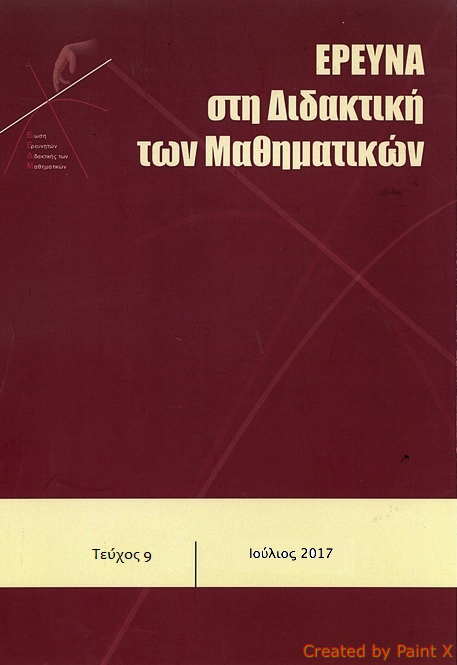MANAGING TASKS IN THE CONTEXT OF THE ASPERGER SYNDROM: A CASE STUDY

Abstract
Asperger's Syndrome (AR) corresponds to high function functional autism diagnosis and to supportive educational inclusion in the classroom. The identification of a characteristic mathematical reasoning and computational practice for this population category has not gone beyond the diagnosis of individual difficulties in psychological tests. Our research focuses on the multiplicative tructure relates to certain psychological characteristics of the AR but also to virtual representations of the teaching mathematical material that can contribute to the development of appropriate educational design. The research results presented in this paper concern strategies for product computation and ways of understanding the relationship between parts-all.
Article Details
- How to Cite
-
Νούλης (Ioannis Noulis) Ι., Καφούση (Sonia Kafousi) Σ., & Καλαβάσης (Fragiskos Kalavasis) Φ. (2017). MANAGING TASKS IN THE CONTEXT OF THE ASPERGER SYNDROM: A CASE STUDY. Research in Mathematics Education, (8), 11–36. https://doi.org/10.12681/enedim.14238
- Section
- Articles

This work is licensed under a Creative Commons Attribution 4.0 International License.
Authors who publish with this journal agree to the following terms:
Authors retain copyright and grant the journal right of first publication with the work simultaneously licensed under a Creative Commons Attribution licence that allows others to share the work with an acknowledgement of the work's authorship and initial publication in this journal.
Authors are able to enter into separate, additional contractual arrangements for the non-exclusive distribution of the journal's published version of the work (e.g. post it to an institutional repository or publish it in a book), with an acknowledgement of its initial publication in this journal.
Authors are permitted and encouraged to post their work online (preferably in institutional repositories or on their website) prior to and during the submission process, as it can lead to productive exchanges, as well as earlier and greater citation of published work (See The Effect of Open Access).




